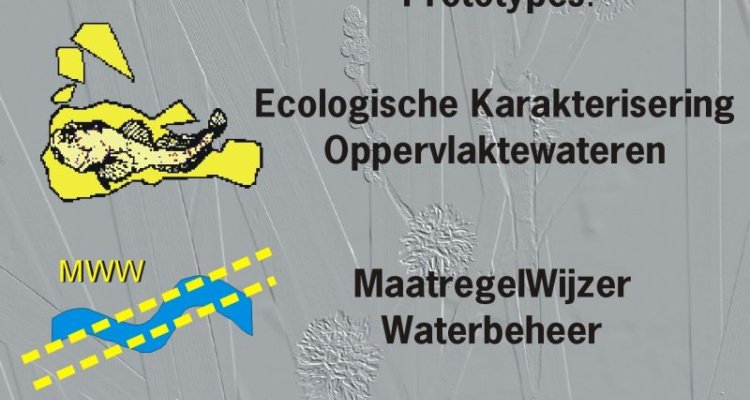
Ecological water management applications
Improving biodiversity, reducing management costs and preventing insect nuisance in wetlands can be facilitated by applying ecological knowledge. We develop smart mowing regimes, floating helophyte mats and nuisance insects prevention schemes to attain these goals.
Examples of projects
- Ditches: PLONS
- Management aquatic nature: Leidraad natuurontwikkeling, Urgente maatregelen, Maaibeheer zeggemoerassen
- Measures:Maatregelen zoetwater PBL, Bestrijding blauwalgen, Begeleiden kleinschalige maatregelen, Aquatische ecologie in Waternood, DSS, N&P limitatie, Eutrofiering
- Invasive species: Exoten, NEO-INHEEM
- Building with Nature: Waterplanten als natuurlijke stuwen
- Policy preparation: Stroomlijning KRW EHS
Highlights
Tools for ecological water management
Ecological water management is still strongly based on the use of structure parameters to typify, assess, evaluate and select measures. Driven by the Water Framework Directive (WFD) a number of typologies, descriptions of reference conditions, assessment techniques, and Decision Support Systems (DSS) to diagnose and select measures for restoration were developed. The EKO tools to classify water bodies, to evaluate current status and to predict the outcome of measures were develop on a regional basis for about a quarter of the areas in the Netherlands. The DSS tools ‘MaatregelWijzer Waterbeheer’ and ‘Waternood DAN’ can assist to select measures for rehabilitation and restoration. The novel ‘Leidraad Natuurontwikkeling’ includes a DSS that is based on ecological theory and is applicable for a number of water bodies and their surrounding landscapes.
Aquatic plants as natural weirs: a nature-based solution
Studies showed that omission of mowing watercourses do not necessarily lead to flooding. Especially, when omission of maintenance is accompanied by a level drop due to the removal of weirs. Still, it remains difficult to predict if and when problems with floods can be expected. The biomass of plants reaches its optimum in the summer, however, the base flow and groundwater level are lower in the summer. The key solution is to determine how the water level at base flow rises due to water plants in the wet profile. During spates, the peak discharge itself is not the problem, but the additional increase in the average water level caused by the obstruction of the watercourse by aquatic plants can be. At a peak discharge the water seeks the path of least resistance and will flow over the water plants. But at the same moment the, submerged aquatic plants will bend, so the flow resistance is reduced. To further study and model flow-water plant growth relationships we will combine water safety with sustainable, cost-effective water management.
Invasive species
Non-indigenous invertebrates are common in fresh waters in The Netherlands. Based on data from the local water authorities, approximately 60% of the sampling locations contained one or more non-indigenous species. We study their impact on the native macroinvertebrate assemblages. Our studies showed that many non-indigenous species are fitting in the already present macroinvertebrate assemblage instead of displacing indicator species or disrupting the whole community.
Major publications
- Verdonschot R.C.M., Didderen K. & Verdonschot P.F.M. (2012) Importance of habitat structure as a determinant of the taxonomic and functional composition of lentic macroinvertebrate assemblages. Limnologica 42: 31-42
- Van Riel, M.C., van der Velde, G. and bij de Vaate, A. (2011) Dispersal of invasive species by drifting. Current Zoology 57 (6): 818−827
- Van Riel, M.C., G. van der Velde, S. Rajagopal, S. Marguillier, F. Dehairs and A. bij de Vaate (2005) Trophic relationships in the Lower Rhine food web during invasion and after establishment of the Ponto-Caspian invader Dikerogammarus villosus. Hydrobiologia, 565: 39-58
- Verdonschot Piet F.M. & Nijboer Rebi C. (2000) Typology of macrofaunal assemblages applied to water and nature management: a Dutch approach. In: J.F. Wright, D.W. Sutcliffe & M.T. Furse (eds), Assessing the biological quality of fresh waters: RIVPACS and other techniques. Freshwater Biological Association, Ambleside, Cumbria, UK. The RIVPACS International Workshop, 16-18 September 1997, Oxford, UK. Chapter 17: 241-262
- Verdonschot, P.F.M. (2000) Integrated ecological assessment methods as a basis for sustainable catchment management. In: M. Jungwirth, S. Muhar & S. Schmutz (eds), Assessing the ecological integrity of running waters. Proc. Int. Conf., Vienna, Austria. Developments in Hydrobiology 149. Hydrobiologia 422/423: 389-412
Publications, tools, presentations
- Keizer-Vlek, H.E. & P.F.M. Verdonschot (2015) Verkenning van de mogelijkheid om waterplanten in te zetten als natuurlijke stuwen. Wageningen, Alterra, WageningenUR, Notitie
- Verdonschot, R.C.M., Verdonschot, P.F.M. (2014) Een meerwaarde van ongewervelde exoten voor Nederlandse wateren? Landschap 31: 173-177
- Verdonschot, R.C.M., Verdonschot, P.F.M. (2014) Inpassen of verdringen? Ongewervelde exoten in zoetwaterecosystemen. De Levende Natuur 115: 49-56
- Aggenbach,C.J.S., Verdonschot R.C.M., de Vries H.H., Groenendijk, D., Dijkstra J.P., van Diggelen R. (2014) Effecten van maaibeheer op kleine zeggenmoerassen in beekdalen; effecten op vegetatiestructuur, microtopografie en faunagemeenschappen. Rapport nr. Rapport nr. 2014/OBN183-BE. Directie Agrokennis, Ministerie van Economische Zaken, Den Haag. 137 pp.
- Verdonschot R.C.M., van Schaik H. & Verdonschot P. (2009) Effecten van rode Amerikaanse rivierkreeft op de vegetatie en macrofauna van sloten. H2O 20: 36
- Ertsen A.C.D., Wal B. van der, Wortelboer F.G. & Verdonschot P. (2007) RISTORI, modellen voor het voorspellen van de effecten van maatregelen op de aquatische gemeenschappen van sloten en beken. Achtergronddocument. STOWA, RIVM en RIZA. 314 pp.